15 Stunning Art Deco Landmarks In Paris You Need To See In Person
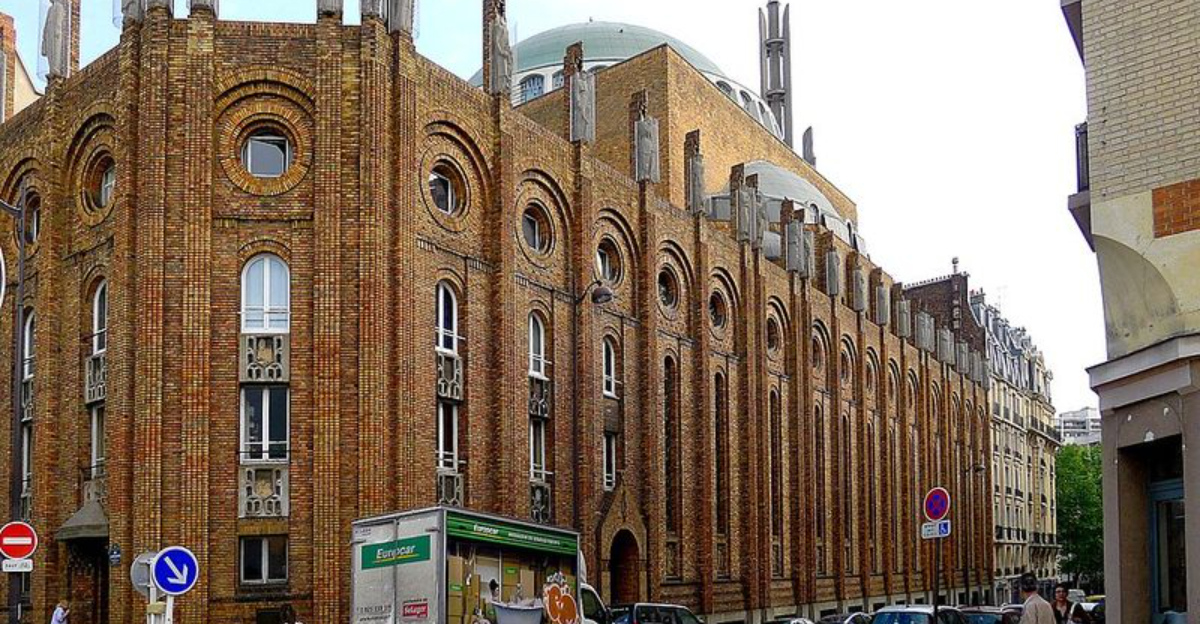
Think you’ve seen all that Paris has to offer? Think again. Beyond the classic sights lies a lesser-known layer of the city – a glamorous world of Art Deco elegance hiding in plain sight.
From chic cinemas to lavish apartment blocks, these bold beauties tell the story of a city roaring through the Jazz Age. Ready to explore a more stylish side of Paris that most tourists miss?
Let’s dive into 15 Art Deco landmarks that are pure eye candy.
1. Théâtre des Champs-Élysées
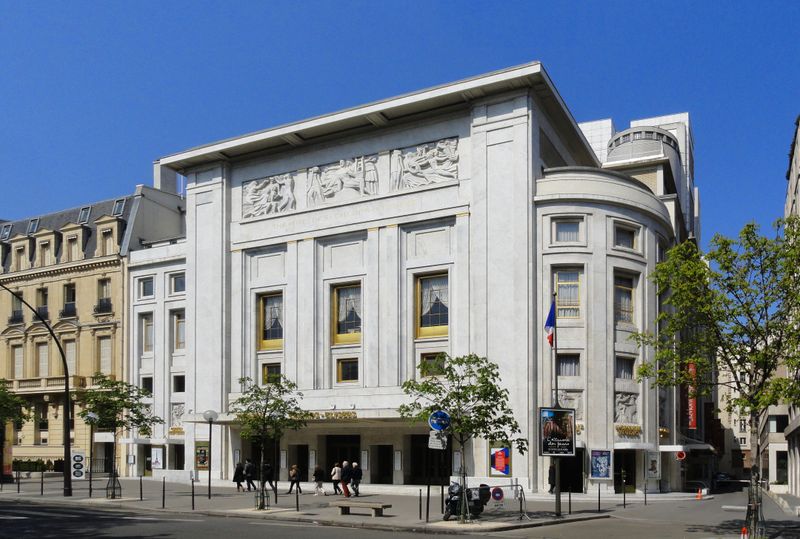
Often mistaken as a later creation, this theater actually predates the Art Deco movement while helping inspire it. Built in 1913, its revolutionary reinforced concrete structure shocked Parisians accustomed to more traditional designs.
The theater’s façade features stunning bas-reliefs by Antoine Bourdelle depicting scenes from Greek mythology. Inside, don’t miss the dome painted by Maurice Denis and the curtain designed by Ker-Xavier Roussel.
This cultural landmark hosted the infamous premiere of Stravinsky’s ‘The Rite of Spring,’ where the audience rioted at the avant-garde music and choreography. Today, it remains one of Paris’s premier venues for classical music and opera.
2. Piscine Molitor Facade
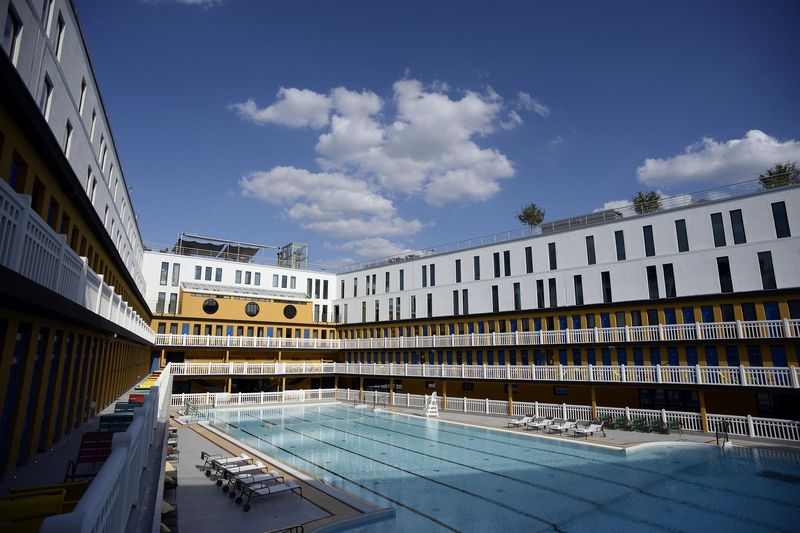
Imagine stepping into a glamorous aquatic playground where Parisian high society once flocked. The Molitor’s iconic blue doors and porthole windows instantly transport visitors to the elegant 1920s when it first opened as the city’s most fashionable swimming spot.
Did you know the first modern bikini debuted here in 1946? After decades of abandonment and serving as a canvas for graffiti artists, this Art Deco masterpiece underwent a meticulous restoration in 2014.
While now part of a luxury hotel, you can still admire the stunning yellow and blue exterior that perfectly captures the nautical-inspired elegance of Art Deco design. Its summer pool remains one of Paris’s most Instagram-worthy spots.
3. Palais de Tokyo
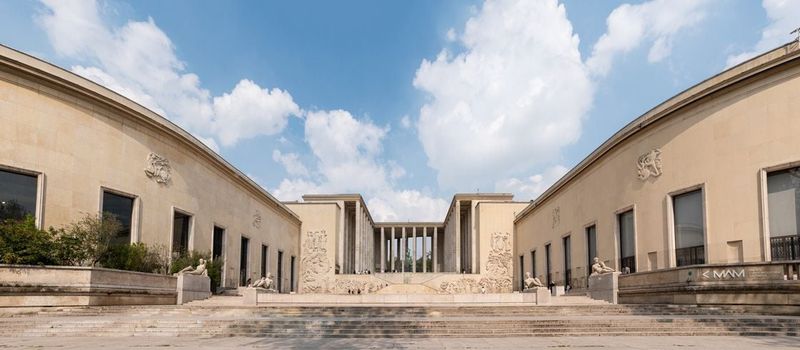
Standing proudly near the Seine, this massive structure shocks visitors with its imposing columns and monumental proportions. Completed in 1937 for the International Exhibition of Arts and Technology, it houses two separate museums under one magnificent roof.
The eastern wing contains the City of Paris Museum of Modern Art, while the western side hosts contemporary exhibitions. Between them runs a dramatic central staircase that’s worth visiting just for the architectural drama.
Night owls rejoice – the Palais stays open until midnight, making it Paris’s only late-night art venue. Its stark concrete exterior represents a more stripped-down, monumental interpretation of Art Deco that emerged in the 1930s, sometimes called “streamline moderne.”
4. La Samaritaine Department Store
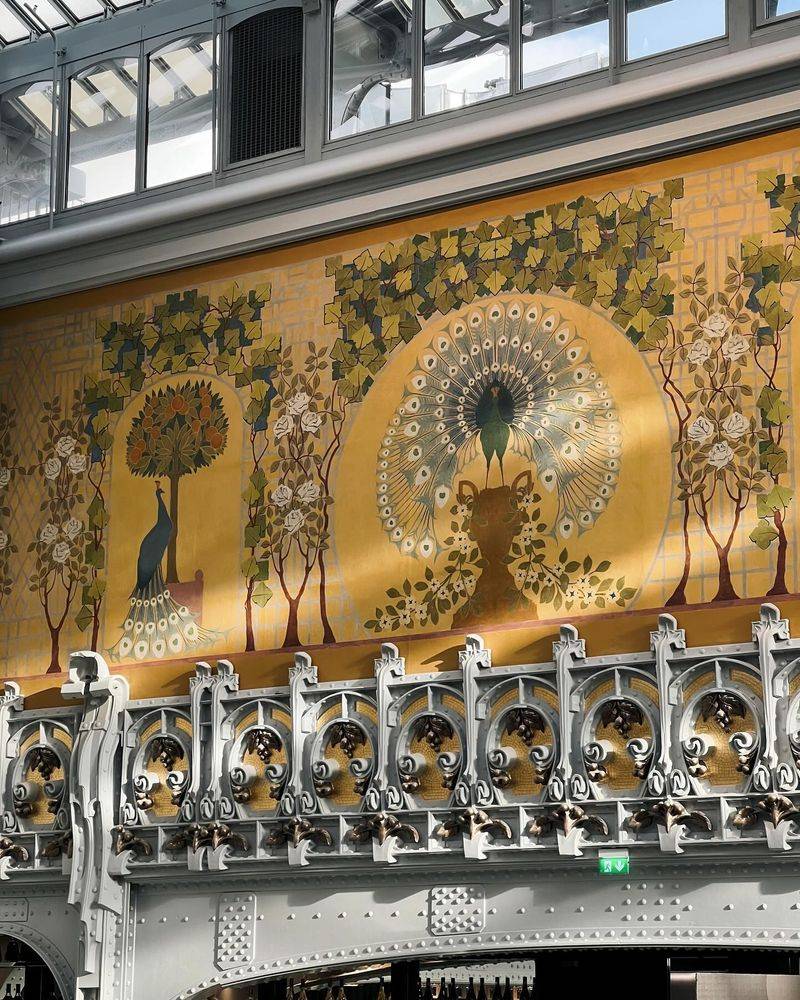
After 16 years of closure and renovation, this legendary department store reopened in 2021, revealing its breathtaking Art Deco and Art Nouveau interiors to a new generation. The stunning peacock fresco above the central staircase will stop you in your tracks!
Founded in 1870, La Samaritaine reached its architectural peak in the 1920s when architect Henri Sauvage added the distinctive Art Deco façade along Rue de Rivoli. The store’s name comes from a water pump on the nearby Pont Neuf that featured a Samaritan woman figure.
Beyond shopping, head to the top floor for one of Paris’s most spectacular panoramic views. The glass roof allows natural light to flood the central atrium, creating an almost cathedral-like shopping experience.
5. Rue Raymond Losserand Murals
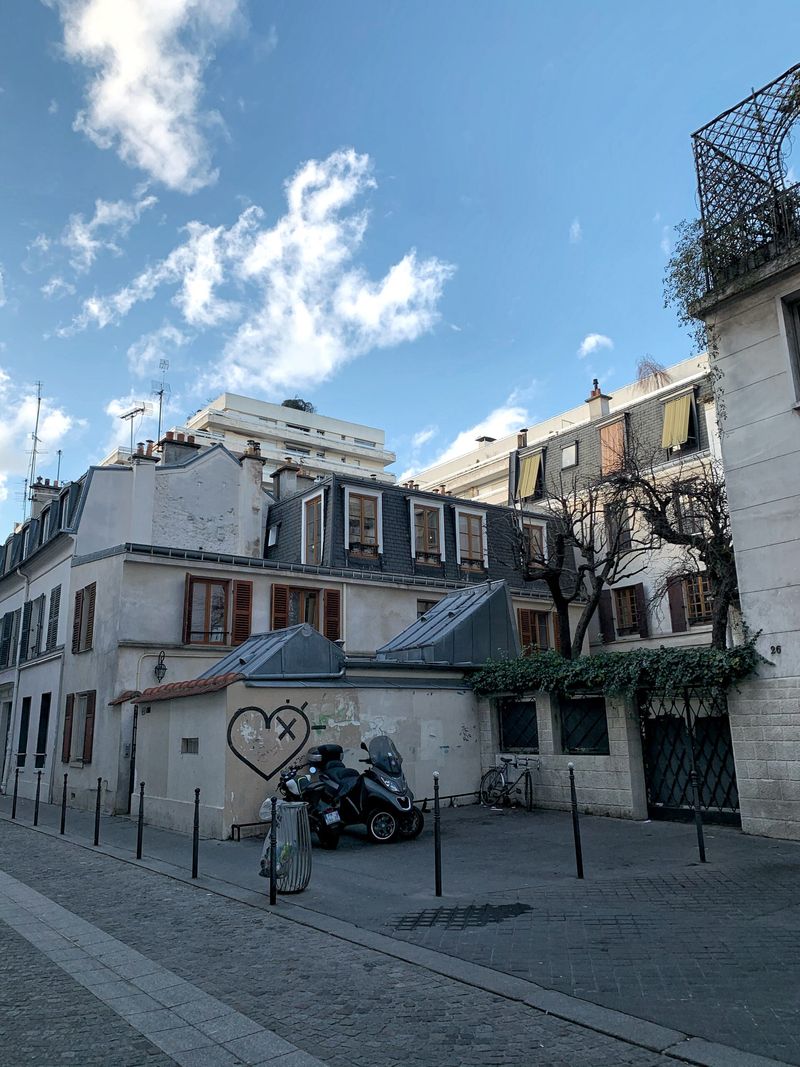
Hidden in the 14th arrondissement, these striking Art Deco murals surprise pedestrians with bold geometric patterns and vivid colors. Created in the early 1930s, they showcase the period’s fascination with Egyptian motifs following the discovery of Tutankhamun’s tomb.
Unlike many Parisian landmarks, these murals aren’t found on grand boulevards but in a working-class neighborhood. They decorate ordinary apartment buildings, bringing artistic flair to everyday life – a core principle of the Art Deco movement.
Many locals walk past without noticing these artistic treasures above their heads! The best viewing time is late afternoon when the sunlight enhances the gold and terracotta tones. Bring binoculars for a closer look at the intricate details that make these murals special.
6. Grand Rex Cinema
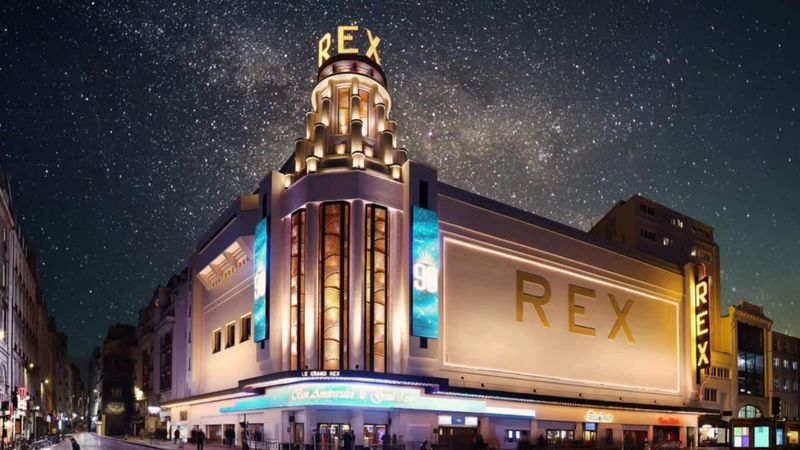
Walking into the Grand Rex feels like entering a Mediterranean fantasy land! This 1932 cinema boasts Europe’s largest auditorium with 2,800 seats beneath a starry ceiling that mimics a night sky.
The façade combines Art Deco with American-inspired “atmospheric” theater design. Its 35-meter tower lights up the Boulevard Poissonnière at night, creating one of Paris’s most recognizable landmarks.
Famous film director Jacques Tati once worked here as an usher before finding fame. Still functioning as a cinema today, the Grand Rex hosts movie premieres and the annual “Féerie des Eaux” water and light show during Christmas season. For film buffs, there’s even a behind-the-scenes tour called “Rex Studios” that reveals the building’s secrets.
7. Palais de Chaillot
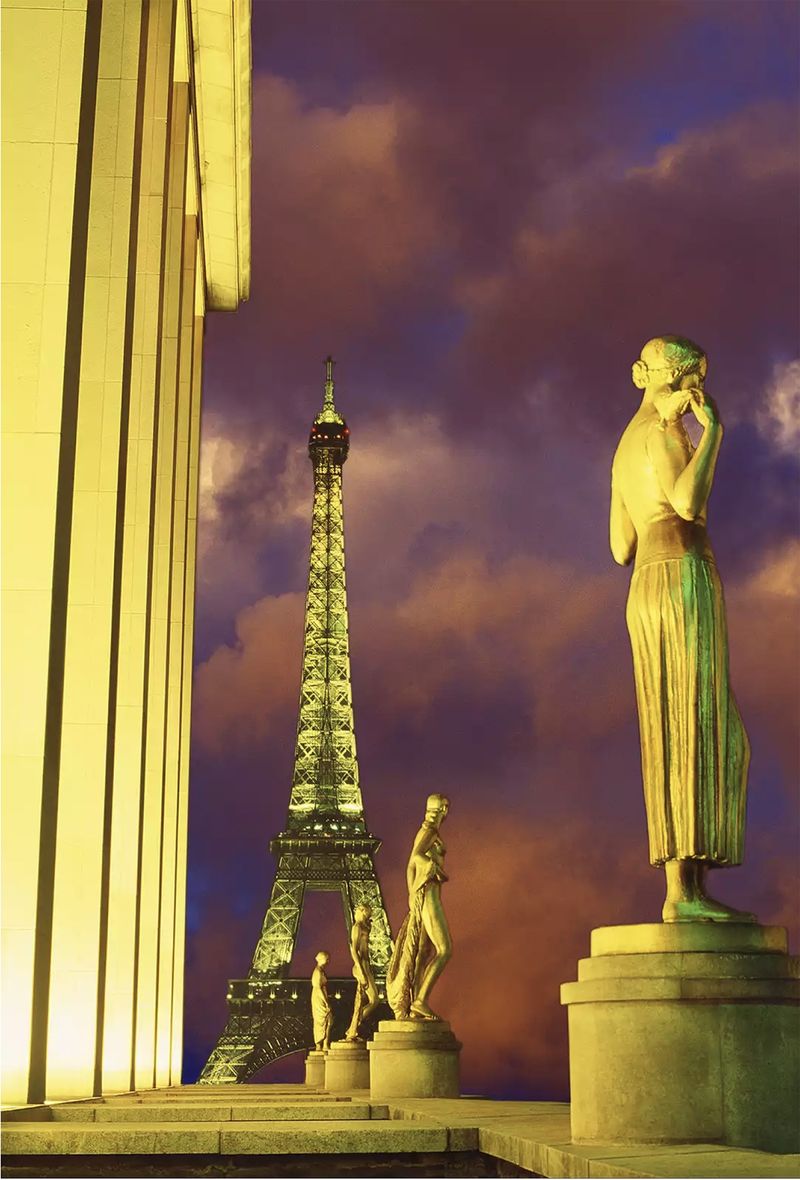
Photographers flock to this monumental complex for the perfect Eiffel Tower shot, but many miss appreciating the building itself. Constructed for the 1937 International Exposition, its curved wings embrace the Trocadéro gardens while providing that iconic Tower vista.
Inside lurk several fascinating museums, including the Naval Museum and the Architecture Museum. The building’s style represents the later, more austere phase of Art Deco that emerged in the 1930s – less ornate but more imposing than earlier examples.
Look for the golden statues adorning the esplanade, each representing different human virtues. During WWII, Hitler posed for his famous Paris photo here, yet ironically, the building later hosted the signing of the UN’s Universal Declaration of Human Rights in 1948.
8. Maison La Roche
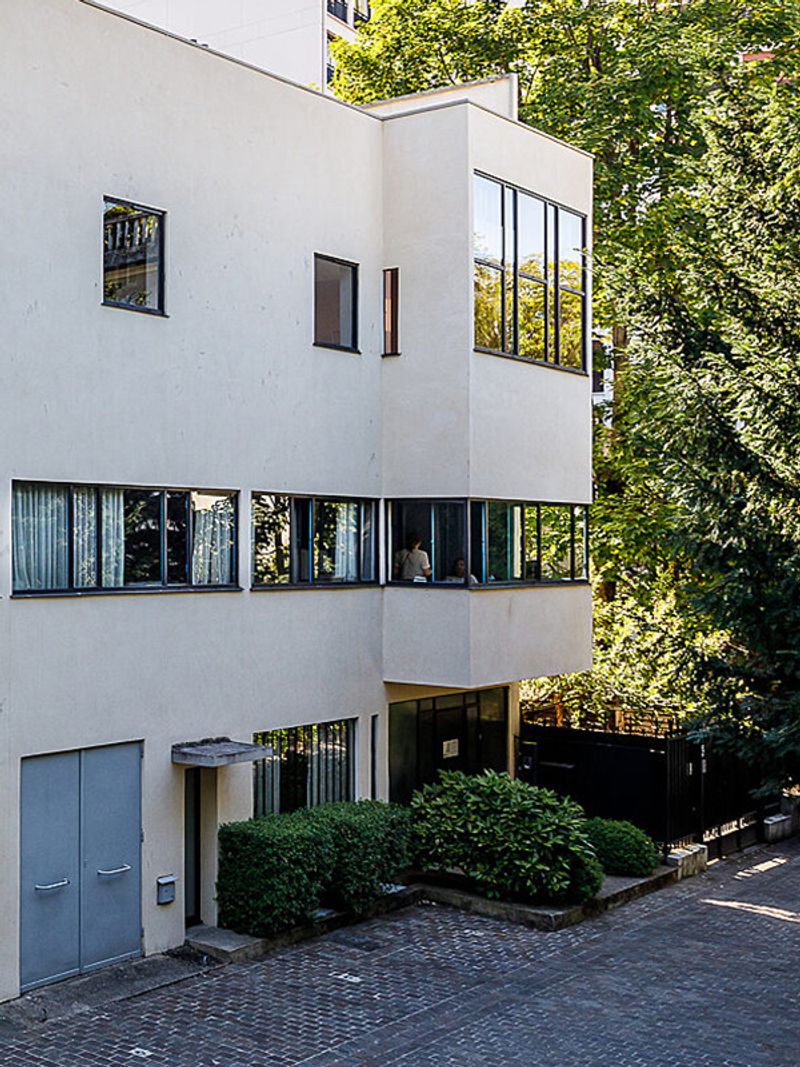
Though technically more Modernist than pure Art Deco, this revolutionary home by Le Corbusier perfectly captures the 1920s spirit of artistic reinvention. Built between 1923-1925 for Swiss banker and art collector Raoul La Roche, it showcases Le Corbusier’s radical “Five Points of Architecture.”
The interior feels like walking through a three-dimensional painting. Walls curve unexpectedly, ramps replace traditional staircases, and strategically placed windows frame views like living photographs.
Colors play a crucial role here – each room features a specific palette to evoke different emotions. Now functioning as a museum, visitors can explore freely, experiencing how Le Corbusier’s vision transformed domestic living. Don’t miss the rooftop garden, another revolutionary feature that influenced decades of architectural design.
9. Rue Mallet-Stevens Ensemble
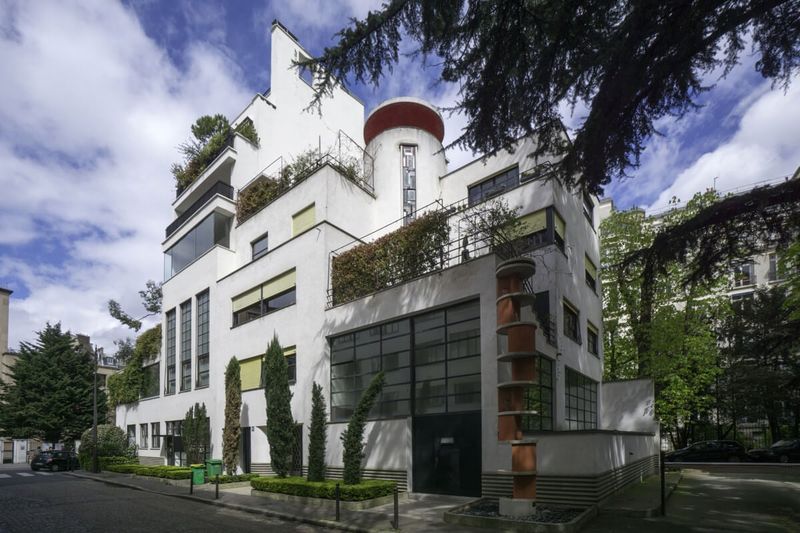
Tucked away in the 16th arrondissement, this entire street serves as an open-air museum of Art Deco architecture. Designed by Robert Mallet-Stevens between 1927-1930, these six striking white houses revolutionized French residential design.
Unlike the ornate Art Deco seen elsewhere, Mallet-Stevens embraced clean lines and geometric forms. The homes feature dramatic right angles, circular windows, and roof terraces that must have seemed utterly alien to 1920s Parisians.
Famous artists and designers were the original residents, including sculptor Jan and Joël Martel, whose studio at No. 10 features remarkable concrete trees. Though privately owned (meaning interiors aren’t accessible), simply walking this street provides a perfect glimpse into the avant-garde vision that transformed 20th-century architecture.
10. Musée d’Art Moderne
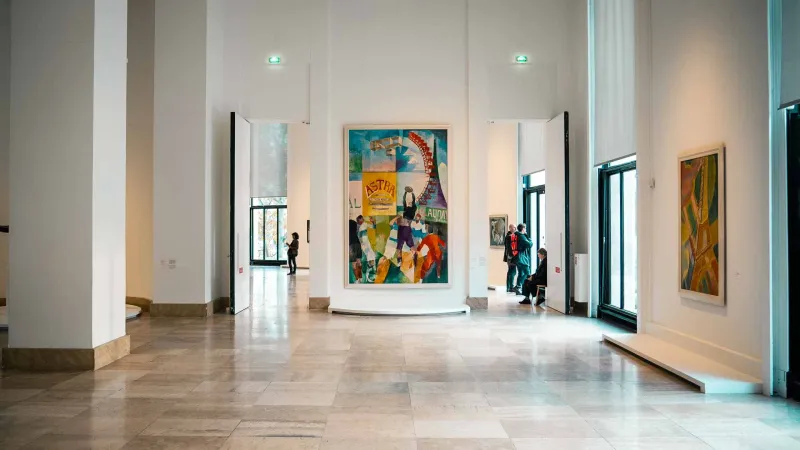
Housing over 15,000 works of modern and contemporary art, this museum occupies the eastern wing of the Palais de Tokyo. Its monumental entrance hall immediately sets the tone with soaring ceilings and dramatic proportions typical of 1930s Art Deco.
The building’s highlight is Raoul Dufy’s massive painting “La Fée Électricité” (The Electricity Fairy). This 600-square-meter masterpiece wraps around an entire room, creating an immersive experience that perfectly complements the building’s grand scale.
Sunlight filters through the original Art Deco windows, creating ever-changing patterns on the marble floors. Unlike many Parisian museums, the Musée d’Art Moderne often feels wonderfully uncrowded, allowing visitors to appreciate both the impressive architecture and the world-class art collection at a leisurely pace.
11. Porte de la Plaine
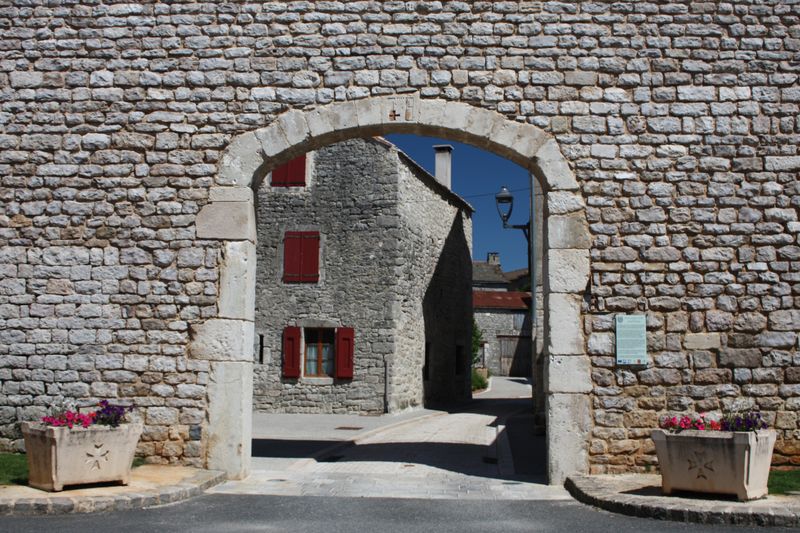
Among Paris’s forgotten Art Deco gems, this monumental gateway once served as an entrance to the 1937 International Exposition. Two massive concrete pylons flank the boulevard, creating a dramatic threshold between the 15th arrondissement and the suburbs beyond.
The pylons feature striking bas-reliefs by sculptor Paul Landowski, who also created Rio de Janeiro’s famous Christ the Redeemer statue. These sculpted scenes celebrate labor and industry – common themes in Art Deco public works.
Few tourists venture here, making it perfect for architecture enthusiasts seeking off-the-beaten-path discoveries. Originally designed to be illuminated at night, the gateway still creates an imposing silhouette against the evening sky. Nearby, you’ll find the Parc des Expositions, continuing the area’s tradition of hosting major exhibitions.
12. Saint-Esprit Church
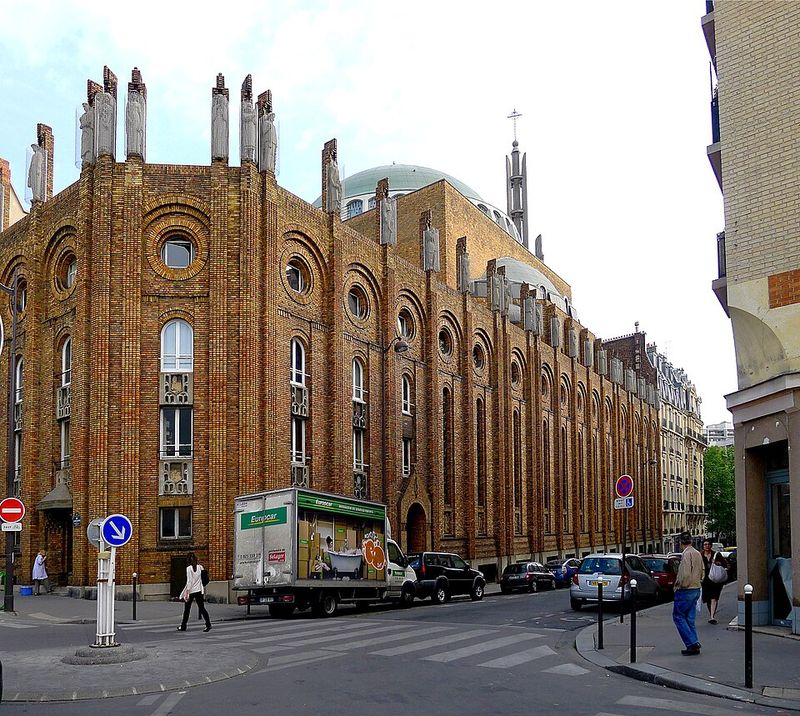
This architectural marvel in the 12th arrondissement proves that Art Deco extended beyond commercial buildings into sacred spaces. Completed in 1935 by architect Paul Tournon, its striking reinforced concrete dome rises 22 meters without any interior supports!
The church’s brick exterior might seem modest, but step inside to discover spectacular Art Deco features. Massive frescoes by painter Maurice Denis cover the walls, while sculptor Henri Bouchard created the distinctive stations of the cross.
Unlike traditional churches, Saint-Esprit embraces modern materials and geometric patterns while maintaining spiritual gravitas. The stunning stained glass windows use contemporary designs rather than medieval styles. Visit on sunny mornings when light streams through these windows, creating colorful patterns across the concrete interior.
13. Place de la Porte Dorée
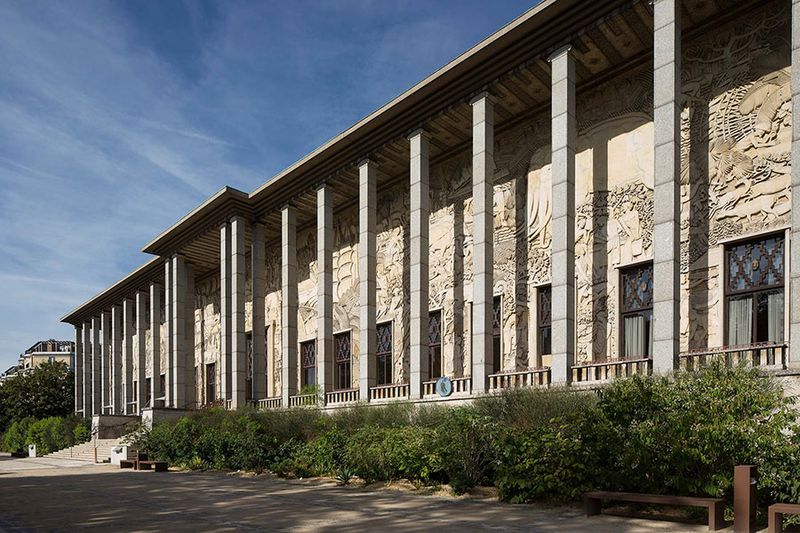
Anchored by the stunning Palais de la Porte Dorée, this square showcases some of Paris’s finest Art Deco tropical motifs. The palace, built for the 1931 Colonial Exhibition, features an extraordinary facade covered in bas-reliefs depicting plants, animals, and people from French colonies.
Artist Alfred Janniot spent two years creating these detailed limestone carvings that wrap around the entire building. Inside, don’t miss the breathtaking central hall with its original Art Deco paintings celebrating French overseas territories.
Today, the palace houses the National Museum of Immigration History and a tropical aquarium in the basement. The surrounding square retains its 1930s layout with geometric patterns in the pavement design. Palm trees add to the colonial-era atmosphere that, while problematic in historical context, produced some of Paris’s most striking Art Deco ornamentation.
14. Monopol Montparnasse Building
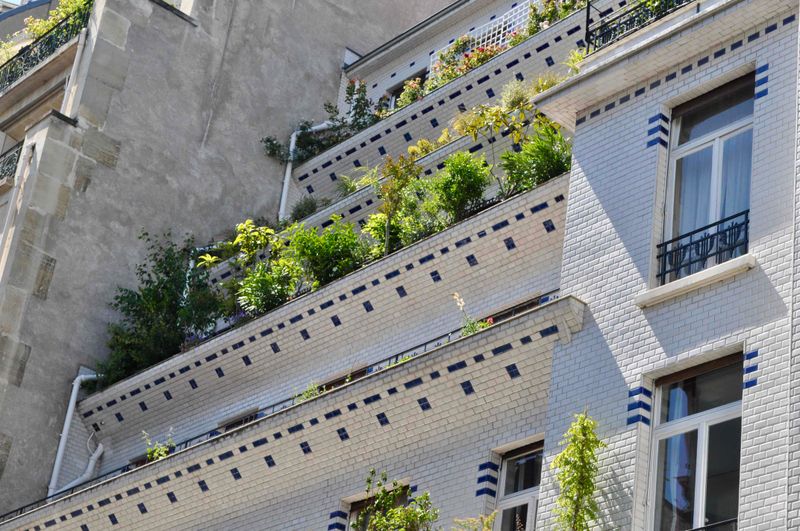
Formerly a Monopol department store, this striking corner building captures the exuberant spirit of 1920s commercial architecture. Its curved facade follows the street corner perfectly, creating a dynamic presence that still turns heads nearly a century later.
The building’s most distinctive features are its dramatic vertical window bands separated by decorative panels. These vertical elements draw the eye upward – a classic Art Deco technique to create a sense of energy and aspiration.
While now housing various businesses, you can still appreciate the original architectural details from the sidewalk. Located in the bustling Montparnasse district, it represents a time when department stores were Paris’s temples of modernity and consumption. The area around it retains much of its 1920s character, making it perfect for an Art Deco walking tour.
15. Cité de l’Architecture
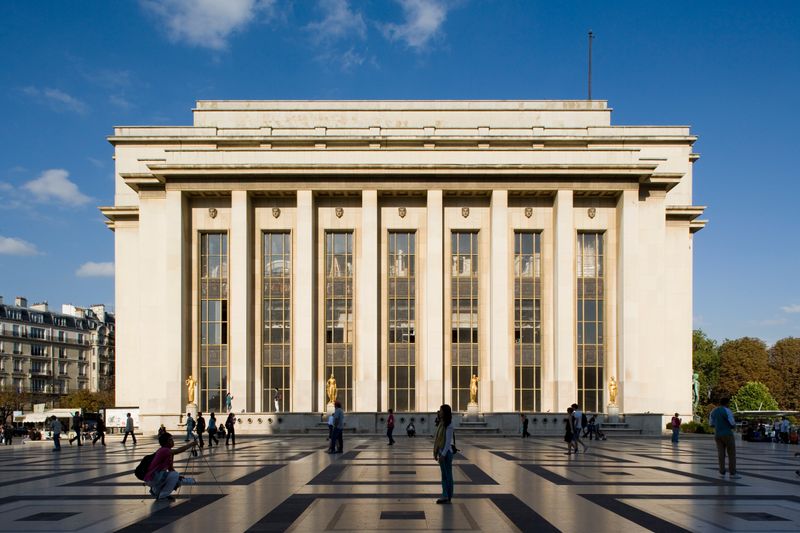
While the museum itself showcases French architecture from all periods, the building housing it – part of the Palais de Chaillot – represents a magnificent example of late Art Deco style. Completed in 1937, its grand colonnades and monumental proportions exemplify the era’s fascination with classical forms reimagined through modern sensibilities.
Inside, hunt for original Art Deco details like the elegant door handles and light fixtures that survived renovations. The building’s enormous windows frame spectacular views of the Eiffel Tower that compete with the exhibits for attention!
Don’t miss the library with its original Art Deco furniture and fittings. Unlike earlier, more decorative Art Deco, this building represents the style’s evolution toward more stripped-down, imposing forms that would influence government and institutional architecture worldwide through the mid-20th century.
